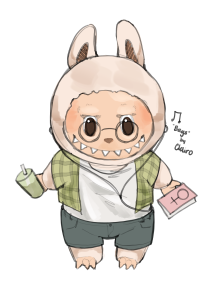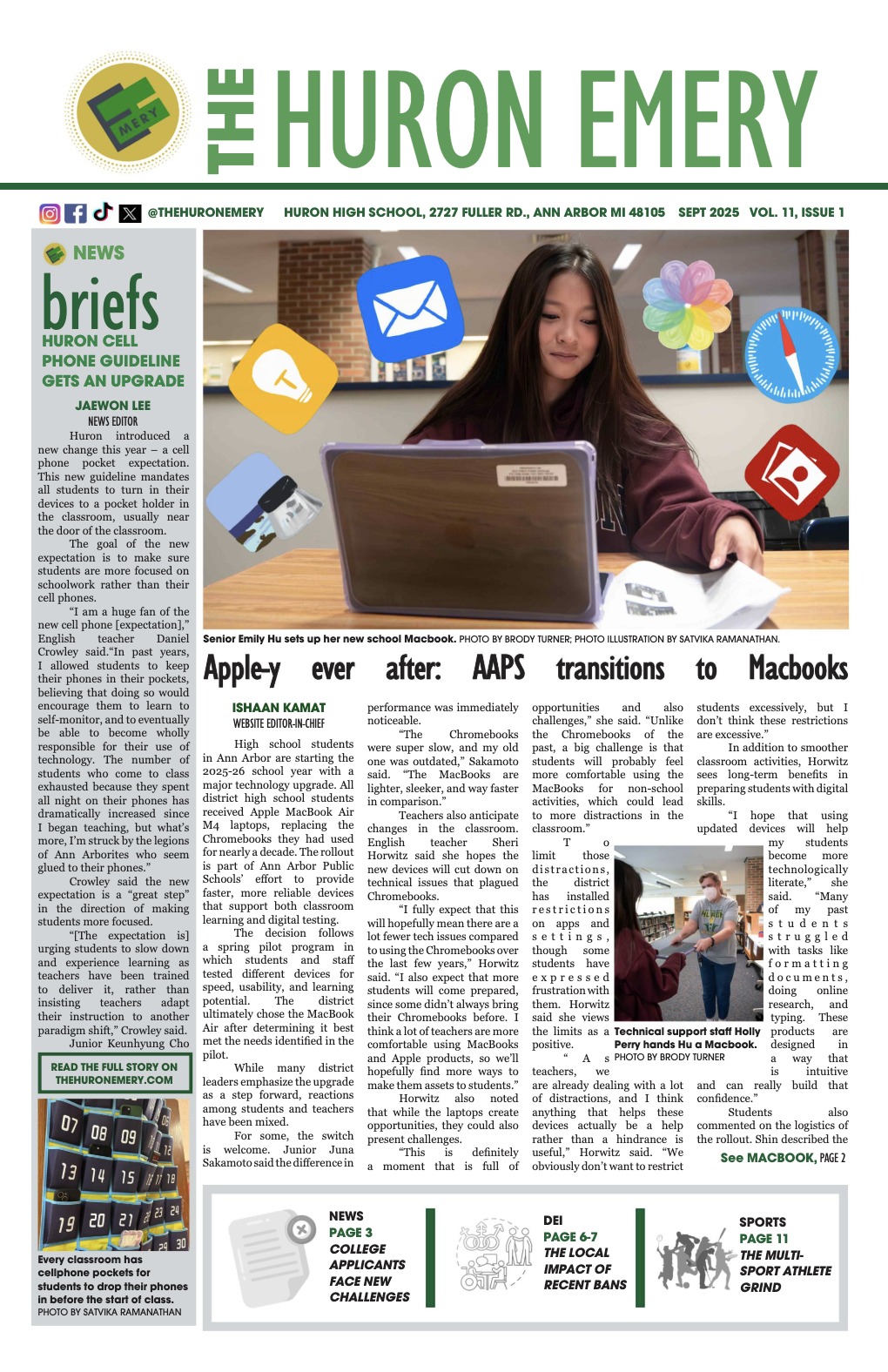An Introduction to the Touhou Project
November 3, 2018
Let us get some facts about this writing out of the way. One, this is NOT a review. I’ve never beaten or even played a Touhou game, so I have no room to talk about that. Two, this is going to be a relatively brief intro because Touhou is VERY large. With all those two points out of the way, let us get in to the main facts of the series.
General Facts: The most notable fact I can say about Touhou Project is that in the entire 25 games, there are only three named males. Yes, the entire cast is mostly female. Considering that spaceships typically do what these girls do, it is very cool and pro feminism.
Anyway, you are surely curious as to what I mean when I mention spaceships, well, the Touhou series is mostly a very difficult danmaku (or bullet hell) game series. For those not familiar with the genre, think a person standing out in the rain and the rain is deadly. That’s what bullet hell games are like.
The difficulty options are easy, which is already hard enough, and normal which is really hard. Hard is pulling your hair out. Lunatic is…quite fitting, actually. Lunatic is Touhou’s equivalent other games’ very hard. Speaking of the Lunatic difficulty, I highly recommend looking up people playing the game on Lunatic-it’s amazing. Another point is that there are an ACTUAL METRIC TON of fan works, some of which are games. Other things are fan art or music remixes. For fan games, we have fan made danmaku games, RPGs, dating sims, and rhythm games. Odds are you can find a Touhou based parody of nearly any game. Other fan projects include the many music remixes, sh*t posts (which are hilarious, and they are called sh*t posts), and much more that I cannot list because I do not know about them or because they are inappropriate.
Background: The first game most people played and was widespread in the west was Touhou Koumakyou, or Touhou The Embodiment of Scarlet Devil. The English name is commonly shortened to EoSD because the full name is a mouthful. However, Koumakyou translates to Eastern Lands of the Scarlet Devil. It was released on Aug. 11, 2002 by ZUN for Microsoft Windows. So, EoSD is the first game, right? That is not actually true. EoSD is the sixth game; the first game is Highly Responsive to Prayers. Let me tell you about the first five games.
PC-9800 Era Games: “Highly Responsive to Prayers” was released on the PC-9800 (PC-98) in Nov. 1996. Instead of being a bullet hell game, it was more like Breakout or Arkanoid. The second game is Story of Eastern Wonderland, which came out on Aug. 15, 1997. The third game is Phantasmagoria of Dimensional Dream, which came out in December of 1997. The fourth game is Lotus Land Story, which came out in August of 1998. Something to note is that Lotus Land Story is where the song “Bad Apple” came from. The fifth and final PC-98 game is Mystic Square, which came out in December of 1998. Being the final game in the PC-98 era, it is kind of special in the sense of the playable characters. So, what does this have to do with anything? Well, after Mystic Square, Touhou Project became inactive for four years while the creator of Touhou, ZUN, made some music for the Seihou games.
Speaking of music, Touhou’s music is fantastic. The FM Synthesis used in the PC-98 games was very chiptune and nostalgic sounding. If you are a fan of NES music, this is like that. My personal favorites are “Witching Dream,” “Complete Darkness,” “Fantasy Express,” “Strawberry Crisis,” “Reincarnation,” “Eternal Shrine Maiden,” and the list goes on. After the four years, ZUN left the group he was working with, Amusement Makers, to go work under his own group, Team Shanghai Alice. Also, Amusement Makers is only a student group, not an actual company, so I can only assume that ZUN still owns the rights to all PC-98 characters. It is also kind of ironic that Team Shanghai Alice only consists of one member, despite the word team in the title. I will now go over the games from the Windows era, since that is the platform the Touhou series moved on to.
Windows Era Games: The first Windows era game is EoSD. The graphics are better than the PC-98 games, and the music was switched from FM Synthesis to PCM music with simplified MIDI as a fall-back, which means screeching MIDI trumpet as well. Aside from the Pokemon Generation three screeching trumpets, the music is fantastic! The very first song you hear, “A Dream That is More Scarlet Than Red,” aside from having one giant title, is so GOOD. It sets up the adventure perfectly. You may never listen to it in game, because it’s so easy to start a playing the game, but I recommend looking it up.
In the game there is little escape from the art. In the PC-98 games, the art was pixel art and it was nice. Then there is the art from the Windows Era, and it doesn’t look that great. Some art is fine, like the art for Reimu Hakurei, Marisa Kirisame and Yukari Yakumo, but the art for the character Sakuya Izayoi in Touhou 6 is not very pretty. Yeah, ZUN is a great composer, but he is a somewhat less than great artist. The art in the early fighting games, like Touhou 7.5, Immaterial and Missing Power, is done by Twilight Frontier (A.K.A. Tasogare Frontier), not ZUN. It looks much better and it’s very anime-like. Which brings me to a very important point.
TOUHOU IS NOT AN ANIME! It gets confused for one all the time on the internet alongside Vocaloid. If I managed to get you interested in Touhou Project and you get into the fandom, correct anyone calling Touhou an anime, even if it takes multiple times to get it into their head. It’s much like correcting someone’s grammar. As for what I mean by early fighting games is that the art in the newer fighting games isn’t by Twilight Frontier; I’m not sure who made it. However, these games are still developed by Twilight Frontier. This art is seen in 14.5, Urban Legend in Limbo, and 15.5, Antinomy of Common Flowers. The newer art in 14.5 and 15.5 is really nice, It looks nicer than the art in the early fighting games. Now it is time for the biggest part of Touhou, all of the characters. Oh boy, this should take awhile.
Characters: For the record, it’s a common joke in the Touhou fandom that there are a ton of characters; that’s because there’s over 160 official characters. I’m only going to talk about the playable characters for the sake of time. You cannot ever play as all of the characters because some are boss characters, and implementing 160 characters would be ridiculous. Because I talked about the playable characters that are in Touhou 5, let us start there. The playable characters are Reimu Hakurei, as she is the staple character; Marisa Kirisame because in a way she is Reimu’s foil; and Marisa who first appeared in Touhou 2 where she had purple clothes and red hair (although she became blond in Touhou 3). Next is Yuuka Kazami the final boss of Touhou 4. In Japan, Yuuka has the nickname of the Ultimate Sadistic Creature, or USC. That nickname may come from this game, as when talking to the first boss Sara, Yuuka says, “Genocide is just a game, whether it’s humans or Makai residents.” Holy Hakurei. I’m going to move on from the slow movement speed Youkai (a Youkai is a Japanese supernatural creature) at fear that she’ll smite me (Yeah, Yuuka moves very slowly). Next is probably the most beloved character in the PC-98 games, and the most used character in this game, Mima. She doesn’t have a last name-she’s mononymous. (Mima is the final boss of Touhou 2, and the “person” who trained Marisa. She’s an evil spirit, vengeful spirit or a ghost.) Mima appeared in Touhou 1, where she held a knife with blood on it, which may indicate how Mima died. It’s fully possible that she killed herself, but her clothes are unstained, so it’s hard to say. Mima is very beloved and is considered quite awesome by the fanbase. She’s stronger than Marisa, a final boss, which can only make her cooler. She is actually extremely strong, as well as confidant in her battle prowess. Her true age is unknown, but it is stated that she has “lived” for a very long time. Although, with her being a ghost, she really hasn’t lived. Mima actually denies being dead, and in her profile she is described as having a deity-like existence to the Hakurei shrine. However, she acknowledges that she is in fact a ghost in her good ending of Mystic Square. Since Mima is a ghost, her magic is the strongest at night. She apparently wants revenge against the entire human race, but her motivations are unknown, and the evil in her evil spirit has faded away in present day. She knows a lot about the Hakurei shrine, even knowing the true power of the Yin-Yang Orbs. There might be a reason or a story for this, but Mima has been around for so long that she’s forgotten. Considering how much I wrote about Mima, I feel like it’s no secret. Like most fans, I hold Mima near and dear to my heart. It actually makes a lot of sense though, especially when you realize or read the wiki and find that the Japanese characters in Mima’s name mean Charming Demon. I can say that a lot of the fanbase, myself included, have been charmed and played for suckers. (Also, the four playable characters in five is the party in the fan game crossover, Touhou Mother.) Mother is known as Earthbound here in the states and Europe.
That’s enough about the games of the past, so let us move onto the windows era and the playable characters there, starting with six. The two playable characters in EoSD are the staples, Reimu and Marisa. They both had two sets, an A and B set. The only thing different is the type of shots used and which bomb is used, which is a spell card for those into the lore. Reimu’s bomb A is Fantasy Dream and her B bomb is Evil Sealing Circle. Marisa’s A set bomb is the well known Master Spark, and her B bomb is Stardust Reverie. As a note about the Master Spark, it was invented by Yuuka who used it in Touhou 4, and Marisa “borrowed” it and added her own flare to it. The reason I put borrowed in quotation marks is Marisa basically stole it from Yuuka like the kleptomaniac Marisa is. Anyway, in Touhou 7, there is one new playable character: Sakuya! The stage five boss from EoSD has now joined with Reimu and Marisa to stop the current incident. It is now time for my overview.
Overview: I can say that I really like Touhou Project, even if I’ve never played a main bullet hell game. If you are interested in Touhou, there are two ways to get into the series: a PS4 named Touhou Genso Wanderer or a Nintendo Switch game named Touhou Kobuto V: Burst Battle. I haven’t beaten Burst Battle, but I may write a review once I do. Anyway, I highly recommend investigating on the wiki-there’s lots of interesting content. If you want a better explanation than from some nerd, there are short videos on YouTube. To wrap this up, I’ll say one last thing: there are a lot of Touhou memes.









